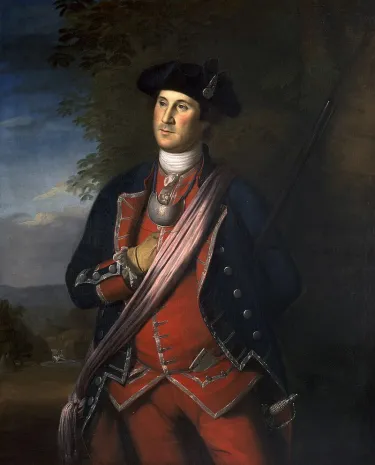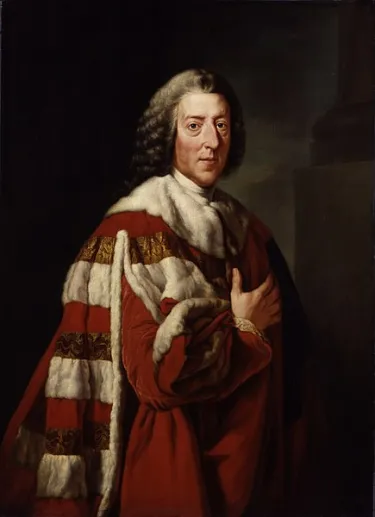
The French and Indian War remains a crucial but often forgotten piece of American history. Here are 10 facts about the French and Indian War, a conflict that is often regarded as a spark that led to the American Revolution.
Fact #1: It was part of a global war
The French and Indian War refers to the North American theater of the overarching global war known as the Seven Years' War in Europe. The French and Indian War was fought between Great Britain and France and their colonists, as well as Native American tribes. They fought over territories and expansion throughout North America.
Fact #2: George Washington essentially set off the war in North America
In 1754, Lieutenant Colonel George Washington, a 22 year old commander of British forces set off with his men towards the coveted Ohio River Valley to assist in building a fort. A small French company of soldiers led by Ensign Joseph Coulon de Jumonville departed French Fort Duquesne to scout intelligence about British movements. When young Washington became aware of the French movement, he set out with his party to meet them, and ambushed them near Great Meadows in Pennsylvania. When the two sides met, Washington ordered his troops to fire, igniting a battle that resulted in the death of Ensign de Jumonville and 9 other French soldiers. After this battle, the Battle of Jumonville Glen, Washington moved his men into the Great Meadows, an open field, and crudely constructed Fort Necessity as a base. A few weeks later, French forces surrounded the British at Fort Necessity, forcing George Washington to surrender and unknowingly, due to poor translation, sign a document admitting to the assassination of Ensign de Jumonville.

Fact #3: The War began before war was formally declared
When George Washington ordered his men to fire on the French company, at that point, neither France nor Great Britain had declared war. Neither side declared war until after the Battles of Jumonville Glen and Fort Necessity had occurred. However, prior to either side declaring war, there was intense conflict between the French and the British with both sides engaging in hostile territorial disputes, and trying to expand into each others' territories. After Washington's surrender at Fort Necessity, he expressed the importance of gaining control of the Ohio River Valley, causing the British to react accordingly and send more troops to the colonies to fight for it.
Fact #4: British colonists greatly outnumbered French colonists
At the time of the French and Indian War, in North America, Great Britain had over 1 million colonists, especially concentrated along the eastern seaboard from Maine to Georgia. France only had about 60,000 colonists in North America at the time. Due to their smaller numbers, French outposts were often unoccupied, sometimes only identified by a sign in the area, giving the British the opportunity to seize control. However, the French received great help from Native American tribes that they were allied with during the war.
Fact #5: Native Americans played a large role in the war
As one might assert from the name of the war, Native Americans played a huge role in the French and Indian War. Different Native American tribes were situated all throughout North America, and prior to the war, were involved in relations with both France and Great Britain, often through trade. When the territorial disputes between the British and French broke out, the Native Americans were forced to choose which side to align themselves with. Some became allies with the French, others with the British, hoping that when the war was over, their land would be returned to them. Territorial disputes between the Native Americans and the British continued even after the British won the war.
Fact #6: William Pitt "The Elder" played a pivotal role
Between 1755 - 1757, the British were continuously losing territory and forts to the French. Continual British losses struck a blow to their morale during this time. However, as hope grew dim, William Pitt took the office of British Secretary of State in 1757 and revitalized the British forces. Taking over control of the British forces in the colonies, he put large amounts of money into the war effort. He also increased British efforts in Europe, hoping to pull French troops away from the colonies, a tactic that worked successfully. While the French forces were weakened in the colonies, Pitt advised British forces to storm into New France and take control of numerous French outposts. These efforts allowed Great Britain to take back control of the colonies and eventually win the war.

Fact #7: France tried to end the war early
After the British were rejuvenated from William Pitt's efforts in the colonies, France knew that they were fighting a losing battle. In 1759, France sought peace negotiations with Britain. However, at the time, the British offers for peace were disagreeable to France, and they revoked their attempts to negotiate. At his time, the King Charles III of Spain, who was cousins with French King Louis XV, offered to join France in their war in the colonies, as long as the war did not end before May 1, 1762. King Louis XV, hoping that Britain would see the two combined powers as a sign to surrender, agreed to Spanish intervention. While Spain's intervention provided a boost to the French, the British were not intimidated, and instead, declared war on Spain as well. Overall, Spain would prove to be a relatively ineffective force against the British.
Fact #8: Britain gained a mass of land after the war
When the war ended with the Treaty of Paris in 1763, France ceded the majority of their North American land to the British. Great Britain obtained a large amount of territory in Canada, as well as almost everything east of the Mississippi. The territorial regions were so changed that historian Francis Parkman famously said, "Half the continent had changed hands at the scratch of a pen."

Fact #9: Even after British victory, there were still territorial disputes
When the French and Indian War ended in 1763, the British gained significant territory. However, although Great Britain had defeated France, they saw considerable pushback from the Native Americans, who were looking to reclaim their land in certain areas. These disputes led to Pontiac's Rebellion which resulted in Britain giving the Native Americans control over the land. British leader, King George III, signed the Royal Proclamation of 1763 that drew a line dividing the British land from the Native American land. The Proclamation declared that no colonists could settle in the land now controlled by the Native Americans.
Fact #10: The war was a spark that led to the American Revolution
The French and Indian War and its consequences were instrumental in causing a divide between Great Britain and its British colonists. After Great Britain ceded control of western land to the Native Americans, the colonists were outraged that they were now prevented from settling in the western region, causing a rift between the colonists and their mother country. Furthermore, due to the war, Great Britain was in massive debt, causing them to levy extreme taxes on the colonists to earn back their monetary losses from the war. The taxes that followed, such as the Stamp Act, the Tea Act, and others, led to the anger among the colonists. Both the Royal Proclamation of 1763 and the absurd taxes that the colonists were forced to pay created outrage among the colonists and led in part to the American Revolution.





